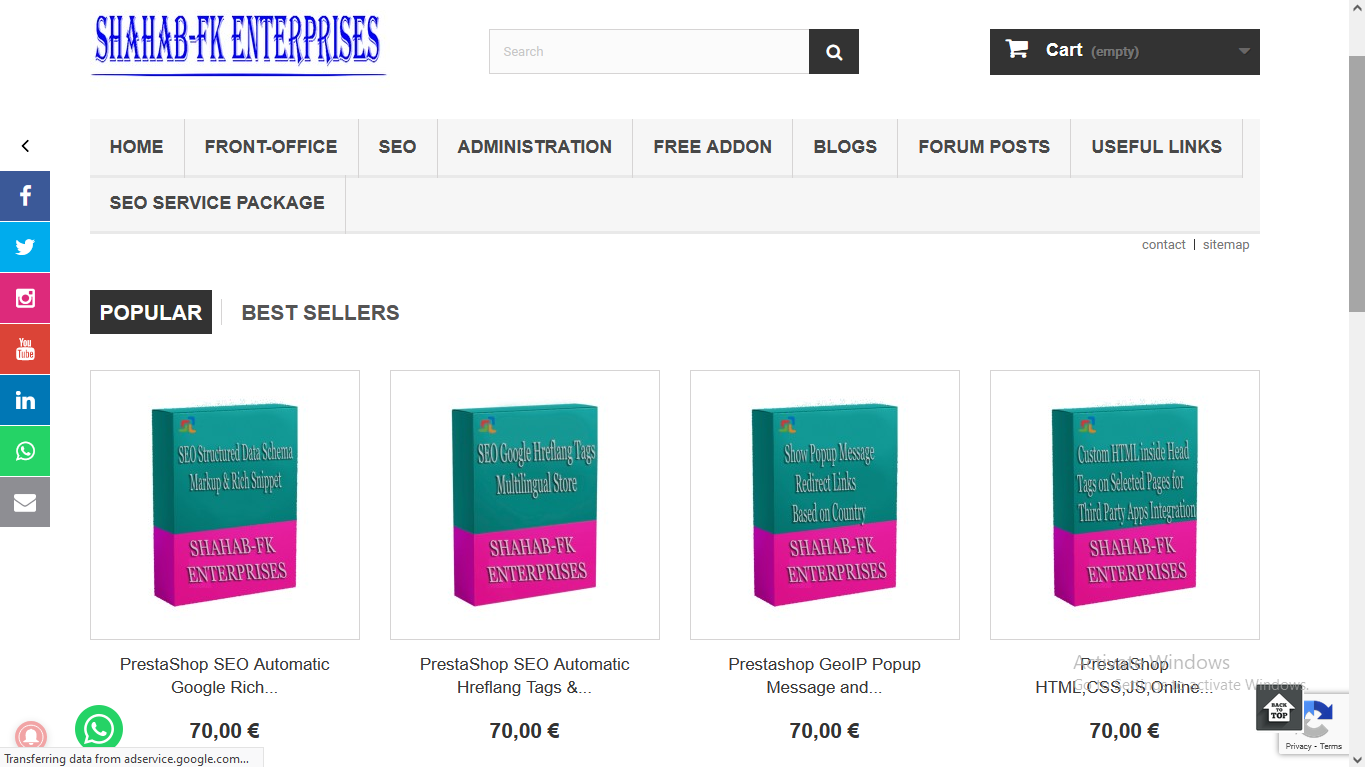Using GTmetrix with PrestaShop is a common practice to analyze and improve the performance and speed of your PrestaShop-based e-commerce website. GTmetrix is a web performance analysis tool that provides insights into your website’s loading speed, performance scores, and recommendations for optimization. Here’s how you can use GTmetrix to assess and enhance your PrestaShop website’s performance:
- Access GTmetrix: Start by visiting the GTmetrix website (https://gtmetrix.com/). GTmetrix offers both free and paid plans, but the free version is generally sufficient for basic performance testing.
- Enter Your PrestaShop Website URL: On the GTmetrix homepage, you’ll find a text box where you can enter your PrestaShop website’s URL. Input your website’s URL and click the “Test your site” button.
- Analyze the Performance Report: GTmetrix will generate a performance report for your website. This report includes various metrics such as PageSpeed Score, YSlow Score, fully loaded time, total page size, and more. These metrics indicate how well your website is performing and where it can be optimized.
- Review Recommendations: Scroll down the GTmetrix report to see a list of recommendations for improving your website’s performance. These recommendations may include optimizing images, leveraging browser caching, reducing server response time, and more.
- Implement Recommendations in PrestaShop: Take note of the specific recommendations provided by GTmetrix and start implementing them in your PrestaShop store. Some optimizations may require technical knowledge, so you may need assistance from a developer or someone familiar with PrestaShop’s backend.
- Image Optimization: Compress and resize images to reduce their file size while maintaining visual quality. You can use image optimization tools or PrestaShop modules designed for this purpose.
- Caching: Enable caching mechanisms within PrestaShop to reduce server load and improve page load times. PrestaShop has built-in caching options, and you can also use caching modules.
- Minification: Minify HTML, CSS, and JavaScript files to reduce their size. PrestaShop’s themes and modules may load multiple scripts and stylesheets, so minimizing them can improve performance.
- Content Delivery Network (CDN): Consider using a CDN to distribute website assets and reduce latency. Many CDN providers integrate seamlessly with PrestaShop.
- Server Optimization: Ensure your hosting server is adequately configured for PrestaShop. Consider using a hosting provider that specializes in e-commerce hosting for optimal performance.
- Re-test and Monitor: After implementing the recommended optimizations, re-run the GTmetrix test for your PrestaShop website to see the impact on performance. Continue to monitor your site’s performance regularly and make adjustments as needed.
- Consider Third-party PrestaShop Modules: PrestaShop offers various performance optimization modules and themes in its marketplace. These can help streamline the optimization process and ensure compatibility with your PrestaShop version.
By regularly using GTmetrix to analyze your PrestaShop website’s performance and taking steps to address its recommendations, you can improve your site’s loading speed and user experience, which is crucial for e-commerce success.

